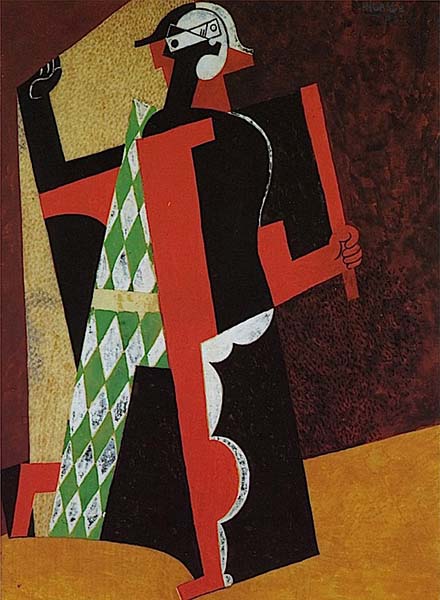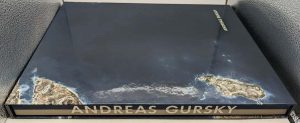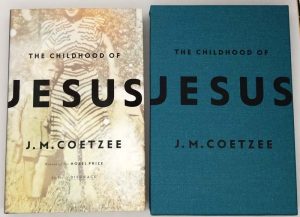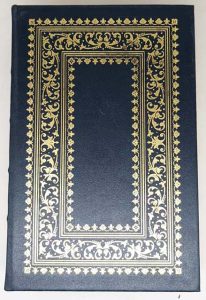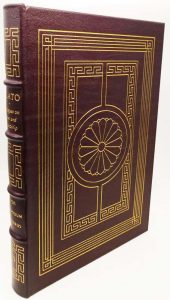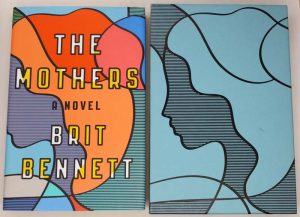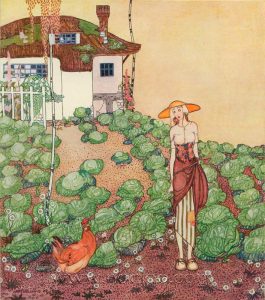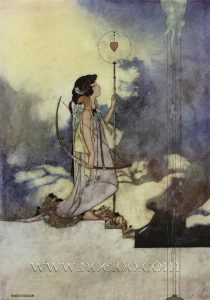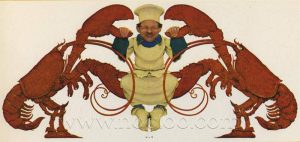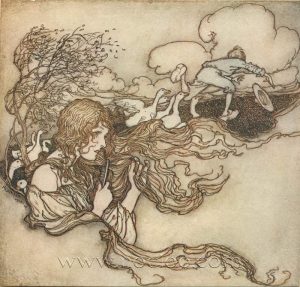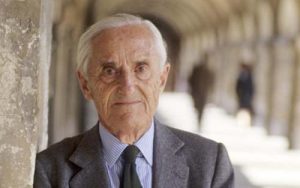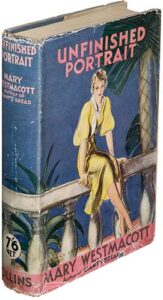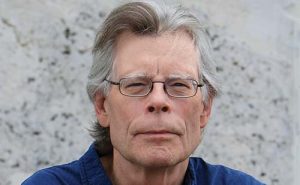Pablo Picasso [1912] - Bouteille, verre et journal sur une table [art, paintings]
Pablo Picasso [1912] - Compotier avec fruits, violon et verre [art, paintings]
Pablo Picasso [1912] - Compotier [art, paintings]
Pablo Picasso [1912] - Femme debout [art, paintings]
Pablo Picasso [1912] - Femme nue ('J'aime Eva') [art, paintings]
Pablo Picasso [1912] - Fetes de Ceret [art, paintings]
Pablo Picasso [1912] - Guitare, verre et journal [art, paintings]
Pablo Picasso [1912] - Guitare, verre et pipe [art, paintings]
Pablo Picasso [1912] - Guitare, verre, bouteille de vieux marc [art, paintings]
Pablo Picasso [1912] - Guitare [art, paintings]
Pablo Picasso [1912] - Guitare1 [art, paintings]
Pablo Picasso [1912] - Homme a la guitare1 [art, paintings]
Pablo Picasso [1912] - Homme a la guitare2 [art, paintings]
Pablo Picasso [1912] - Homme au chapeau a l'interieur d'une maison [art, paintings]
Pablo Picasso [1912] - Instruments de musique [art, paintings]
Pablo Picasso [1912] - L'aficionado (Le torero) [art, paintings]
Pablo Picasso [1912] - La coquille Saint-Jacques ('Notre Avenir est dans l'air') [art, paintings]
Pablo Picasso [1912] - La Rue d'Orchampt [art, paintings]
Pablo Picasso [1912] - La table de l'architecte [art, paintings]
Pablo Picasso [1912] - Le pigeon aux petits pois [art, paintings]
Pablo Picasso [1912] - Le pigeon [art, paintings]
Pablo Picasso [1912] - Le poete [art, paintings]
Pablo Picasso [1912] - Le restaurant dinde avec truffes et vin [art, paintings]
Pablo Picasso [1912] - Les oiseaux morts [art, paintings]
Pablo Picasso [1912] - Ma Jolie Mural [art, paintings]
Pablo Picasso [1912] - Ma Jolie' (Femme a la guitare) [art, paintings]
Pablo Picasso [1912] - Nature morte a la chaise cannee [art, paintings]
Pablo Picasso [1912] - Nature morte au journal [art, paintings]
Pablo Picasso [1912] - Nature morte espagnole [art, paintings]
Pablo Picasso [1912] - Nature morte qui [art, paintings]
Pablo Picasso [1912] - Notre avenir est dans l'air (Mur de l'atelier Andre Breton) [art, paintings]
Pablo Picasso [1912] - Nu , j'aime Eva [art, paintings]
Pablo Picasso [1912] - Paysage aux affiches [art, paintings]
Pablo Picasso [1912] - Souvenir du Havre [art, paintings]
Pablo Picasso [1912] - Table dans un cafe - bouteille de pernod [art, paintings]
Pablo Picasso [1912] - Taverne (Le Jambon) [art, paintings]
Pablo Picasso [1912] - Tete d'homme au chapeau [art, paintings]
Pablo Picasso [1912] - Tete d'homme moustachu ('Kou') [art, paintings]
Pablo Picasso [1912] - Tete d'homme [art, paintings]
Pablo Picasso [1912] - Tete d'homme1 [art, paintings]
Pablo Picasso [1912] - Tete de femme [art, paintings]
Pablo Picasso [1912] - Verre de Pernod et cartes [art, paintings]
Pablo Picasso [1912] - Verre et cartes a jouer [art, paintings]
Pablo Picasso [1912] - Violiniste [art, paintings]
Pablo Picasso [1912] - Violon 'Jolie Eva [art, paintings]
Pablo Picasso [1912] - Violon de Ceret [art, paintings]
Pablo Picasso [1912] - Violon et raisins [art, paintings]
Pablo Picasso [1912] - Violon pyramidal [art, paintings]
Pablo Picasso [1912] - Violon vertical [art, paintings]
Pablo Picasso [1912] - Violon, partition et journal [art, paintings]
Pablo Picasso [1912] - Violon, verre, pipe et encrier [art, paintings]
Pablo Picasso [1912] - Violon1 [art, paintings]
Pablo Picasso [1913] - Bouteille de Bass, clarinette, guitare, violon, journal, as de trefle [Le violon] [art, paintings]
Pablo Picasso [1913] - Bouteille de Bass, guitare, journal et verre sur une table carree [art, paintings]
Pablo Picasso [1913] - Bouteille de Bass, verre, paquet de tabac, carte de visite [art, paintings]
Pablo Picasso [1913] - Bouteille, clarinette, violon, journal, verre [art, paintings]
Pablo Picasso [1913] - Clarinette et Violon [art, paintings]
Pablo Picasso [1913] - Etudiant au journal [art, paintings]
Pablo Picasso [1913] - Femme a la guitare [art, paintings]
Pablo Picasso [1913] - Femme a la guitare1 [art, paintings]
Pablo Picasso [1913] - Femme en chemise [etude] [art, paintings]
Pablo Picasso [1913] - Femme en chemise assise dans un fauteuil [art, paintings]
Pablo Picasso [1913] - Femme nue assise dans un fauteuil [art, paintings]
Pablo Picasso [1913] - G-J-V-B [art, paintings]
Pablo Picasso [1913] - Guitar, Gas-Jet and Bottle [art, paintings]
Pablo Picasso [1913] - Guitare 2 [art, paintings]
Pablo Picasso [1913] - Guitare et bouteille de Bass [art, paintings]
Pablo Picasso [1913] - Guitare, crane et journal [art, paintings]
Pablo Picasso [1913] - Guitare [art, paintings]
Pablo Picasso [1913] - Guitare1 [art, paintings]
Pablo Picasso [1913] - Homme a la guitare [art, paintings]
Pablo Picasso [1913] - Instruments de musique [art, paintings]
Pablo Picasso [1913] - Joueur de cartes1 [art, paintings]
Pablo Picasso [1913] - Nature morte au pichet et aux pommes [art, paintings]
Pablo Picasso [1913] - Oiseau sur une branche [art, paintings]
Pablo Picasso [1913] - Paysage de Ceret [art, paintings]
Pablo Picasso [1913] - Paysage de Ceret1 [art, paintings]
Pablo Picasso [1913] - Personnage arlequinesque (Arlequin) [art, paintings]
Pablo Picasso [1913] - Portrait de Guillaume Apollinaire [art, paintings]
Pablo Picasso [1913] - Tete d'homme [art, paintings]
Pablo Picasso [1913] - Tete d'homme1 [art, paintings]
Pablo Picasso [1913] - Tete de jeune fille au chapeau garni de raisins [art, paintings]
Pablo Picasso [1913] - Verre sur un gueridon [art, paintings]
Pablo Picasso [1913] - Vieux-Marc [art, paintings]
Pablo Picasso [1913] - Violon accroche au mur [art, paintings]
Pablo Picasso [1913] - Violon au cafe (Violon, verre, bouteille) [art, paintings]
Pablo Picasso [1913] - Violon et clarinette [art, paintings]
Pablo Picasso [1913] - Violon et guitare1 [art, paintings]
Pablo Picasso [1913] - Violon et verres sur une table [art, paintings]
Pablo Picasso [1913] - Violon [art, paintings]
Pablo Picasso [1914] - Arlequin a la guitare [Arlequin jouant de la guitare] [art, paintings]
Pablo Picasso [1914] - Bouteille et verre avec tranche de citron [art, paintings]
Pablo Picasso [1914] - Bouteille, verre et pipe [art, paintings]
Pablo Picasso [1914] - Bouteille, verre, journal [art, paintings]
Pablo Picasso [1914] - Cartes a jouer, bouteille, verre [art, paintings]
Pablo Picasso [1914] - Cartes a jouer, verres, bouteille de rhum ('Vive la France') [art, paintings]
Pablo Picasso [1914] - Compotier et poire coupee [art, paintings]
Pablo Picasso [1914] - Compotier, grappe de raisin, poire coupee [art, paintings]
Pablo Picasso [1914] - Compotier, verre, bouteille, fruits (Nature morte verte) [art, paintings]
Pablo Picasso [1914] - Compotier, Violin, Bouteille [art, paintings]
Pablo Picasso [1914] - Couteau, fourchette, menu, bouteille, jambon [art, paintings]
Pablo Picasso [1914] - Etudiant a la pipe [art, paintings]
Pablo Picasso [1914] - Femme assise avec livre [art, paintings]
Pablo Picasso [1914] - Grappe de raisin, pipe, verre, et journal [art, paintings]
Pablo Picasso [1914] - Grappe de raisin [art, paintings]
Pablo Picasso [1914] - Grappe de raisins, pipe, verre et journal [art, paintings]
Pablo Picasso [1914] - Homme a la moustache1 [art, paintings]
Pablo Picasso [1914] - Homme a la pipe (Le fumeur) [art, paintings]
Pablo Picasso [1914] - Homme a la pipe attable [Homme a la pipe accoude sur une table] [art, paintings]
Pablo Picasso [1914] - Homme a la pipe [art, paintings]
Pablo Picasso [1914] - Homme assis au verre [Femme et homme] [art, paintings]
Pablo Picasso [1914] - Homme au chapeau jouant de la guitare [Joueur de guitare] [art, paintings]
Pablo Picasso [1914] - Homme au gibus [art, paintings]
Pablo Picasso [1914] - Jambon, verre, bouteille de vieux marc, journal [art, paintings]
Pablo Picasso [1914] - L'artiste et son modele [art, paintings]
Pablo Picasso [1914] - La bouteille de Bass [Journal] [art, paintings]
Pablo Picasso [1914] - Le gueridon [art, paintings]
Pablo Picasso [1914] - Le verre d'absinthe [art, paintings]
Pablo Picasso [1914] - Le vieux Marc [art, paintings]
Pablo Picasso [1914] - Le violon [art, paintings]
Pablo Picasso [1914] - Nature morte au verre et a la pomme [art, paintings]
Pablo Picasso [1914] - Nature morte aux fleurs de lis [art, paintings]
Pablo Picasso [1914] - Nature morte avec fruits, verre et journal [art, paintings]
Pablo Picasso [1914] - Nature morte- Guitare, journal, verre et as de trefle [art, paintings]
Pablo Picasso [1914] - Nature morte [art, paintings]
Pablo Picasso [1914] - Pipe et carte [art, paintings]
Pablo Picasso [1914] - Pipe et partition [art, paintings]
Pablo Picasso [1914] - Pipe et verre [art, paintings]
Pablo Picasso [1914] - Pipe, verre et bouteille de Rhum [art, paintings]
Pablo Picasso [1914] - Pipe, verre et paquet de tabac [art, paintings]
Pablo Picasso [1914] - Pipe, verre, as de trefle, bouteille de Bass, guitare, de ('Ma Jolie') [art, paintings]
Pablo Picasso [1914] - Pipe, verre, boite d'allumettes [art, paintings]
Pablo Picasso [1914] - Pipe, verre, bouteille de rhum [art, paintings]
Pablo Picasso [1914] - Pipe, verre, journal, guitare, bouteille de vieux marc ('Lacerba') [art, paintings]
Pablo Picasso [1914] - Pipe, violon, bouteille de Bass [art, paintings]
Pablo Picasso [1914] - Portrait de fille [etude] [art, paintings]
Pablo Picasso [1914] - Portrait de jeune fille [art, paintings]
Pablo Picasso [1914] - Portrait de jeune fille1 [art, paintings]
Pablo Picasso [1914] - Restaurant [art, paintings]
Pablo Picasso [1914] - vase de fruits et grappes [art, paintings]
Pablo Picasso [1914] - Verre [Nature morte aVerre [Nature morte au pointille rouge] [art, paintings]
Pablo Picasso [1914] - Verre et bouteille de rhum empaillee [art, paintings]
Pablo Picasso [1914] - Verre et de [art, paintings]
Pablo Picasso [1914] - Verre et paquet de tabac sur une table [art, paintings]
Pablo Picasso [1914] - Verre et paquet de tabac [art, paintings]
Pablo Picasso [1914] - Verre sur une table [art, paintings]
Pablo Picasso [1914] - Verre, as de trefle et de [art, paintings]
Pablo Picasso [1914] - Verre, bouteille de vin, paquet de tabac, journal [art, paintings]
Pablo Picasso [1914] - Verre, de et journal [art, paintings]
Pablo Picasso [1914] - Verre, de, journal [art, paintings]
Pablo Picasso [1914] - Verre, journal, bouteille [art, paintings]
Pablo Picasso [1914] - Verre, paquet de tabac et as de trefle [art, paintings]
Pablo Picasso [1914] - Verre, pipe et journal [art, paintings]
Pablo Picasso [1914] - Verre [art, paintings]
Pablo Picasso [1914] - Verre2 [art, paintings]
Pablo Picasso [1914] - Verre3 [art, paintings]
Pablo Picasso [1914] - Verre4 [art, paintings]
Pablo Picasso [1914] - Verre5 [art, paintings]
Pablo Picasso [1914] - Verre6 [art, paintings]
Pablo Picasso [1914] - Verres et bouteilles [art, paintings]
Pablo Picasso [1914] - Vive La France [art, paintings]
Pablo Picasso [1915] - Arlequin tenant une bouteille et femme [art, paintings]
Pablo Picasso [1915] - Arlequin [art, paintings]
Pablo Picasso [1915] - Couple de danseurs [art, paintings]
Pablo Picasso [1915] - Femme assise a la mandoline [art, paintings]
Pablo Picasso [1915] - Femme au chapeau dans un fauteuil [art, paintings]
Pablo Picasso [1915] - Femme au chapeau de velours dans un fauteuil et colombe [art, paintings]
Pablo Picasso [1915] - Femme nue dans un fauteuil et homme a la moustache tenant une bouteille de vin [art, paintings]
Pablo Picasso [1915] - Guitare et journal [art, paintings]
Pablo Picasso [1915] - Guitare sur un gueridon [art, paintings]
Pablo Picasso [1915] - Homme accoude sur une table [art, paintings]
Pablo Picasso [1915] - Homme assis [art, paintings]
Pablo Picasso [1915] - Homme assis1 [art, paintings]
Pablo Picasso [1915] - Homme au chapeau melon assis dans un fauteuil [art, paintings]
Pablo Picasso [1915] - homme_au_chapeau_melon_assis_dans_un_fauteuil [art, paintings]
Pablo Picasso [1915] - Homme [art, paintings]
Pablo Picasso [1915] - Instruments de musique et compotier sur un gueridon [art, paintings]
Pablo Picasso [1915] - Instruments et bol de fruits devant une fenetre avec un avion [art, paintings]
Pablo Picasso [1915] - La crucifixion [art, paintings]
Pablo Picasso [1915] - Nature morte dans un paysage [Compotier avec fruits, mandoline, verre sur une table dans un paysage] [art, paintings]
Pablo Picasso [1915] - Pipe, de, journal [art, paintings]
Pablo Picasso [1915] - Portrait d'Ambroise Vollard [art, paintings]
Pablo Picasso [1915] - Portrait d'un jeune homme [art, paintings]
Pablo Picasso [1915] - Verre, as de trefle, bouteille sur une table [art, paintings]
Pablo Picasso [1915] - Violon [art, paintings]
Pablo Picasso [1915] - Vive la France [art, paintings]
Pablo Picasso [1916] - Accordeoniste [Homme a chapeau] [art, paintings]
Pablo Picasso [1916] - Acteurs et audience dans le theatre [art, paintings]
Pablo Picasso [1916] - Arlequin a la guitare [art, paintings]
Pablo Picasso [1916] - Arlequin a la guitare1 [art, paintings]
Pablo Picasso [1916] - Arlequin assis a la guitare [art, paintings]
Pablo Picasso [1916] - Arlequin [art, paintings]
Pablo Picasso [1916] - Cuisine provencale [art, paintings]
Pablo Picasso [1916] - Femme assise dans un fauteuil [La glace au-dessus de la cheminee] [art, paintings]
Pablo Picasso [1916] - Femme assise dans un fauteuil [art, paintings]
Pablo Picasso [1916] - Femme-Guitare sur une table [art, paintings]
Pablo Picasso [1916] - Guitare et partition sur une cheminee [art, paintings]
Pablo Picasso [1916] - Guitare, clarinette et bouteille sur une table [art, paintings]
Pablo Picasso [1916] - Guitariste [art, paintings]
Pablo Picasso [1916] - Homme a la cheminee [art, paintings]
Pablo Picasso [1916] - Homme assis dans un fauteuil [art, paintings]
Pablo Picasso [1916] - Homme aux mains croisees accoude a une table [art, paintings]
Pablo Picasso [1916] - L'egyptien1 [art, paintings]
Pablo Picasso [1916] - Nature morte job [art, paintings]
Pablo Picasso [1917] - Arlequin au bicorne [art, paintings]
Pablo Picasso [1917] - Arlequin et femme au collier [art, paintings]
Pablo Picasso [1917] - Arlequin [art, paintings]
Pablo Picasso [1917] - Arlequin1 [art, paintings]
Pablo Picasso [1917] - Autoportrait1 [art, paintings]
Pablo Picasso [1917] - Blanquita Suarez a l'eventail [art, paintings]
Pablo Picasso [1917] - Cheval eventre [art, paintings]
Pablo Picasso [1917] - Composition au verre [Verre et pipe] [art, paintings]
Pablo Picasso [1917] - Compotier avec fruits [art, paintings]
Pablo Picasso [1917] - Compotier [art, paintings]
Pablo Picasso [1917] - Femme assise dans un fauteuil rouge [art, paintings]
Pablo Picasso [1917] - Femme assise dans un fauteuil [art, paintings]
Pablo Picasso [1917] - Femme devant un livre [L'ecoliere] [art, paintings]
Pablo Picasso [1917] - Femme en costume espagnol (La Salchichona) [art, paintings]
Pablo Picasso [1917] - Femme0 [art, paintings]
Pablo Picasso [1917] - Femme1 [art, paintings]
Pablo Picasso [1917] - Femme2 [art, paintings]
Pablo Picasso [1917] - Homme assis accoude [art, paintings]
Pablo Picasso [1917] - L'arlequin de Barcelone [art, paintings]
Pablo Picasso [1917] - L'italienne1 [art, paintings]
Pablo Picasso [1917] - L'Italienne2 [art, paintings]
Pablo Picasso [1917] - Le retour du bapteme (Le Nain) [art, paintings]
Pablo Picasso [1917] - Leonide Massine en arlequin [art, paintings]
Pablo Picasso [1917] - Nature morte [art, paintings]
Pablo Picasso [1917] - Nature morte1 [art, paintings]
Pablo Picasso [1917] - Olga Kokhlova a la mantille [art, paintings]
Pablo Picasso [1917] - Olga Kokhlova [art, paintings]
Pablo Picasso [1917] - Olga Kokhlova1 [art, paintings]
Pablo Picasso [1917] - OProfil d'Olga au chignon [art, paintings]
Pablo Picasso [1917] - Parade - projet de costume pour le prestidigitateur chinois [art, paintings]
Pablo Picasso [1917] - Parade - projet pour le costume de l'acrobate feminin [art, paintings]
Pablo Picasso [1917] - Parade - projet pour un costume d'acrobate [art, paintings]
Pablo Picasso [1917] - Parade (etudes pour le rideau de scene) [art, paintings]
Pablo Picasso [1917] - Partition, bouteille de porto, guitare et cartes a jouer [art, paintings]
Pablo Picasso [1917] - Personnage au compotier [art, paintings]
Pablo Picasso [1917] - Personnage dans un fauteuil [art, paintings]
Pablo Picasso [1917] - Personnage [art, paintings]
Pablo Picasso [1917] - Portrait d'Olga dans un fauteuil [art, paintings]
Pablo Picasso [1917] - Portrait d'Olga dans un fauteuil1 [art, paintings]
Pablo Picasso [1917] - Portrait d'Olga Kokhlova [art, paintings]
Pablo Picasso [1917] - Portrait d'Olga Kokhlova1 [art, paintings]
Pablo Picasso [1917] - Portrait d'Olga1 [art, paintings]
Pablo Picasso [1917] - Rideau pour le ballet Parade [art, paintings]
Pablo Picasso [1917] - Tete de Pierrot [art, paintings]
Pablo Picasso [1917] - Vase de fleurs [art, paintings]
Pablo Picasso [1917] - Verre et compotier sur une table [art, paintings]
Pablo Picasso [1917] - Villa Medici [art, paintings]
Pablo Picasso [1917] - Visage de femme [art, paintings]
Pablo Picasso [1917] - Vue sur le monument de Colomb [art, paintings]
Pablo Picasso [1918] - Amour, nu, Arlequin et Pierrot jouant de la guitare [art, paintings]
Pablo Picasso [1918] - Arlequin a la guitare (Si tu veux) [art, paintings]
Pablo Picasso [1918] - Arlequin a la Guitare [art, paintings]
Pablo Picasso [1918] - Arlequin [art, paintings]
Pablo Picasso [1918] - Arlequin1 [art, paintings]
Pablo Picasso [1918] - Baigneuses [art, paintings]
Pablo Picasso [1918] - Circus [art, paintings]
Pablo Picasso [1918] - Compotier avec poire et pomme [art, paintings]
Pablo Picasso [1918] - Corbeille de fruits [art, paintings]
Pablo Picasso [1918] - Deux peches [art, paintings]
Pablo Picasso [1918] - Femme assise dans un fauteuil rouge [art, paintings]
Pablo Picasso [1918] - Femme assise dans un fauteuil [art, paintings]
Pablo Picasso [1918] - Fillette au cerceau [art, paintings]
Pablo Picasso [1918] - Guitare et cruche sur une table [art, paintings]
Pablo Picasso [1918] - Homme assis [art, paintings]
Pablo Picasso [1918] - Idylle sous un arbre [art, paintings]
Pablo Picasso [1918] - L'homme a la guitare [art, paintings]
Pablo Picasso [1918] - La guitare [art, paintings]
Pablo Picasso [1918] - Les baigneuses [art, paintings]
Pablo Picasso [1918] - Nature morte a la guitare [art, paintings]
Pablo Picasso [1918] - Nature morte [art, paintings]
Pablo Picasso [1918] - Nature morte2 [art, paintings]
Pablo Picasso [1918] - Olga Picasso allongee sur un sofa [art, paintings]
Pablo Picasso [1918] - Pierrot au loup [art, paintings]
Pablo Picasso [1918] - Pierrot1 [art, paintings]
Pablo Picasso [1918] - Pipe, verre et carte a jouer [art, paintings]
Pablo Picasso [1918] - Pipe, verre et paquet de tabac [art, paintings]
Pablo Picasso [1918] - Portrait de Olga Kokhlova [art, paintings]
Pablo Picasso [1918] - Verre et pipe [art, paintings]
Pablo Picasso [1918] - Verre [art, paintings]
